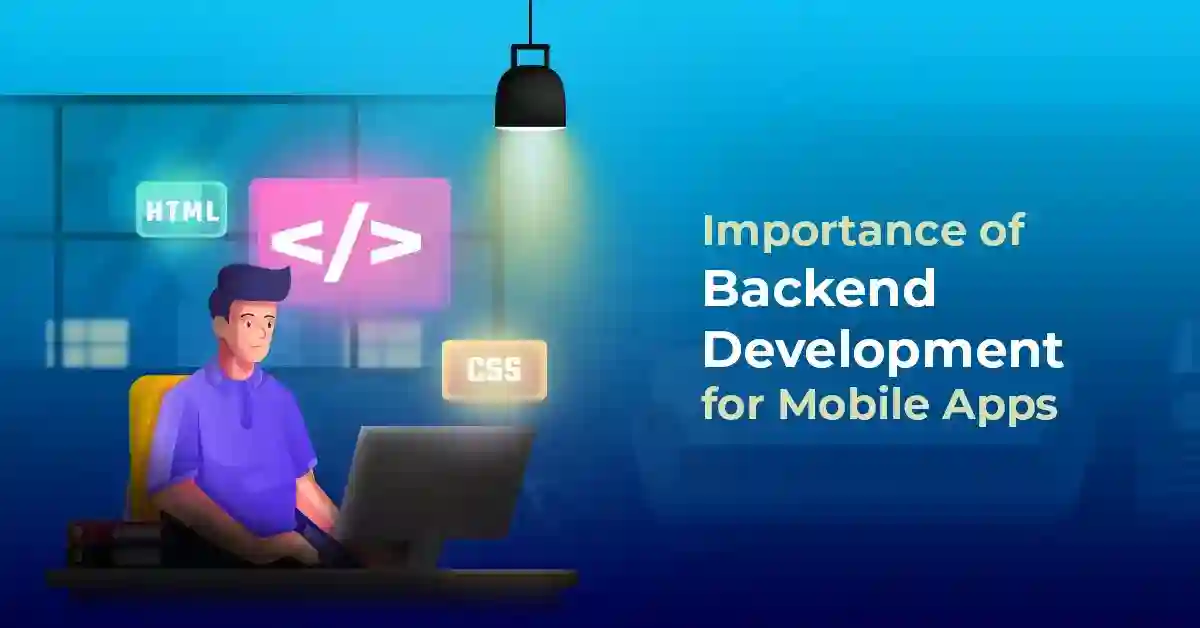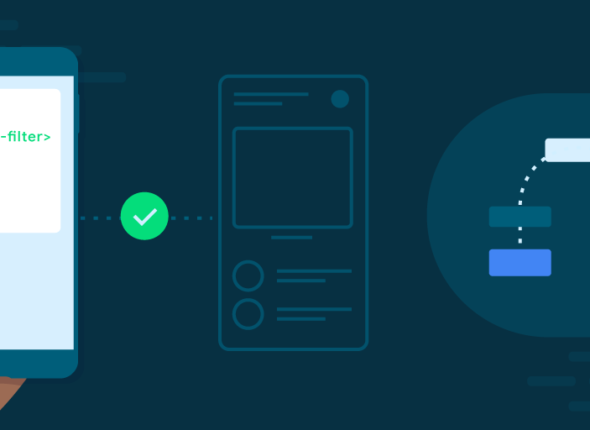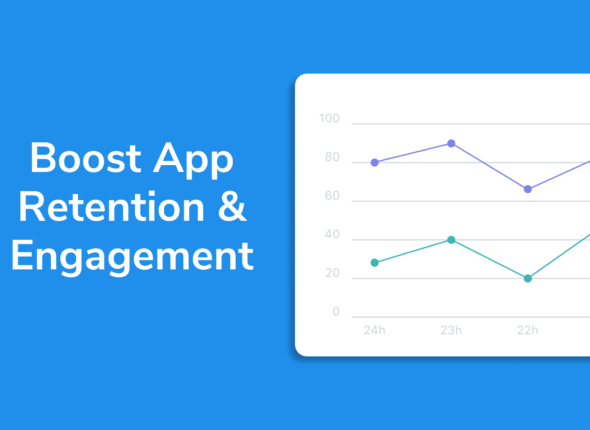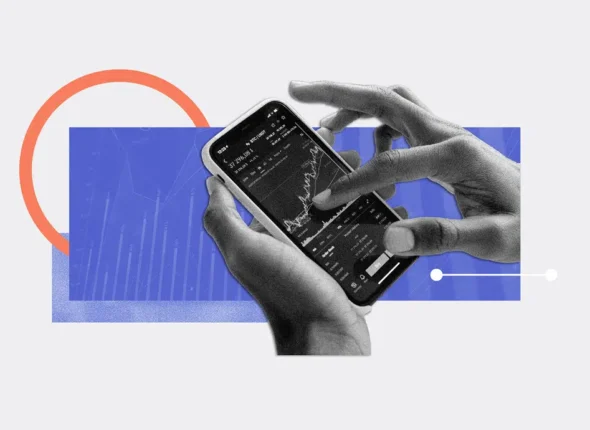When most people think of mobile apps, their minds typically go to the user interface (UI), features, and overall experience. However, behind every smooth, responsive, and feature-rich mobile app is a robust backend that powers everything from data storage to server-side logic. While the frontend deals with the visual elements that users interact with, the backend serves as the app’s foundation, managing databases, server-side logic, APIs, and more. Backend development is often overlooked by end users but plays a pivotal role in ensuring the app’s functionality, scalability, security, and overall performance.
In this blog, we will explore why backend development is essential for mobile apps, the key responsibilities of backend systems, common backend architectures, and best practices for building a strong backend that supports mobile applications.
What is Backend Development?
Backend development refers to the server-side components of a mobile application that handle tasks such as data management, user authentication, and integration with external services. While users interact with the frontend—the part of the app that displays visuals and processes input—the backend operates behind the scenes, processing data, storing it in databases, and delivering information to the app in real-time.
The backend can be thought of as the “engine” that powers the mobile app, enabling various functionalities like user authentication, cloud data storage, messaging services, push notifications, and more. Without a solid backend, the app’s frontend would be static, offering very limited functionality.
Why Backend Development is Critical for Mobile Apps
1. Data Management and Storage
Mobile apps often need to store and retrieve user data, such as personal information, preferences, media files, and more. The backend is responsible for managing this data, ensuring it is stored securely, and providing easy access to it whenever needed. Whether it’s a social media app that saves user profiles and posts, or an e-commerce app that stores product catalogs and user orders, a reliable backend ensures that the data is always available and consistent.
Backend development ensures proper database architecture and management, whether it’s relational (SQL) or non-relational (NoSQL). This allows the app to process complex queries, retrieve data efficiently, and scale up when the user base grows.
2. User Authentication and Authorization
One of the most important responsibilities of the backend is handling user authentication and authorization. When users sign up, log in, or reset their passwords, these operations are processed through the backend. The backend verifies user credentials, manages sessions, and ensures that only authorized users can access certain features or data.
Effective user authentication is critical for maintaining the security of sensitive information, such as payment details, personal data, or medical records. The backend also ensures compliance with privacy regulations such as GDPR or HIPAA, providing data encryption and secure communication.
3. Business Logic and Data Processing
While the frontend focuses on the presentation layer and user interactions, the backend handles the business logic, or the set of rules that govern how the app behaves. For example, in an e-commerce app, the backend will handle tasks such as calculating prices, processing discounts, managing inventory, and handling payment transactions.
Business logic may also include processing data in real-time. For example, a weather app would retrieve data from external APIs, process the information, and deliver relevant weather updates to users. A robust backend allows these operations to occur smoothly and quickly.
4. Push Notifications and Real-Time Updates
Push notifications are a critical feature for many mobile apps, especially for messaging, social media, or news apps. The backend is responsible for sending push notifications to the app based on triggers, user actions, or scheduled events. For example, when a new message is received, or when a special promotion is available, the backend sends a notification to alert the user in real time.
Real-time updates also rely on backend infrastructure. In apps like ride-sharing (Uber, Lyft) or food delivery services (DoorDash), the backend provides real-time location data, order statuses, and driver updates. This ensures the app remains interactive, even when multiple users are engaging with it simultaneously.
5. Integration with Third-Party Services
Most modern mobile apps rely on third-party services to enhance their functionality. These services might include payment gateways (Stripe, PayPal), geolocation services (Google Maps), social media integration (Facebook, Twitter), and analytics tools (Google Analytics, Firebase). The backend acts as the central hub that integrates with these third-party APIs, processes external data, and delivers the information to the frontend.
For example, in a banking app, the backend may need to integrate with a payment processor to handle transactions securely. In fitness apps, it might need to sync data from wearables or integrate with social platforms for sharing achievements.
6. Scalability and Performance
As mobile apps grow in popularity, they must be able to handle a larger user base without compromising performance. The backend ensures the app can scale effectively by using cloud infrastructure (AWS, Google Cloud, Microsoft Azure) and load balancing techniques to distribute traffic evenly across servers. This prevents downtime and ensures that the app remains responsive even under heavy loads.
A well-built backend allows for the app’s seamless scaling as the user base expands. This means that the app will not slow down or crash when it experiences a surge in users, such as during a promotional event or a new feature release.
7. Security
Security is a top priority in mobile app development, and the backend plays a critical role in safeguarding user data and maintaining the integrity of the app. The backend ensures secure communication between the app and the server, encrypting sensitive data (e.g., credit card information, passwords) during transit and storage.
Other security mechanisms such as OAuth, JWT (JSON Web Tokens), and two-factor authentication (2FA) are implemented on the backend to protect user accounts from unauthorized access. Additionally, the backend is responsible for preventing common attacks like SQL injection, cross-site scripting (XSS), and distributed denial of service (DDoS) attacks.
8. App Updates and Maintenance
Over time, mobile apps require updates to add new features, fix bugs, or improve performance. Backend development ensures that these updates can be implemented without disrupting the user experience. For example, backend APIs can be updated to add new endpoints or optimize existing ones without requiring users to download a new version of the app.
Additionally, ongoing maintenance of the backend is necessary to ensure it remains secure, performs optimally, and scales with the growing number of users.


Key Components of Backend Development
1. Server
The server is the central hub where the backend code is deployed and run. It processes requests from the mobile app, handles data storage, and performs business logic. Servers can be either on-premise (for enterprises with strict security needs) or cloud-based, where resources can be scaled easily to handle user demand.
2. Database
A database stores all of the app’s data, such as user profiles, app content, transactions, and more. Backend developers design and manage the database, ensuring efficient data storage and retrieval. There are two main types of databases:
- Relational databases (SQL): These databases use structured query language (SQL) to manage data that is organized into tables. Examples include MySQL, PostgreSQL, and Microsoft SQL Server.
- Non-relational databases (NoSQL): These databases store data in a more flexible, unstructured way, making them ideal for apps that handle large volumes of data or need to scale quickly. Examples include MongoDB and Firebase.
3. APIs (Application Programming Interfaces)
APIs allow the frontend of the app to communicate with the backend. APIs provide a set of rules and protocols that define how the app can request and retrieve data from the server. REST (Representational State Transfer) and GraphQL are two common API architectures used in mobile app development.
4. Middleware
Middleware sits between the mobile app and the server, facilitating communication and managing services like authentication, data validation, and logging. Middleware ensures that all requests to the backend are handled efficiently and securely.
5. Cloud Infrastructure
Cloud services like AWS, Google Cloud, and Microsoft Azure provide the infrastructure to host and scale the backend, ensuring that apps can handle growing demand. Cloud services also offer a variety of tools for monitoring performance, managing databases, and optimizing app delivery.
Best Practices for Backend Development in Mobile Apps
1. Design for Scalability
Always design the backend with future growth in mind. Use cloud services that allow your app to scale easily, and implement load balancing to distribute traffic across multiple servers. Plan for traffic surges by incorporating auto-scaling features and redundancy.
2. Focus on Security
Security should be a top priority in backend development. Encrypt sensitive data, use secure communication protocols (e.g., HTTPS), and implement strong user authentication and authorization measures. Regularly update security patches and conduct vulnerability assessments to keep the app secure from evolving threats.
3. Implement Caching
Caching improves app performance by temporarily storing data that’s frequently accessed. By reducing the number of database queries, caching minimizes the load on the server and speeds up response times for users.
4. Use Microservices Architecture
In microservices architecture, the backend is broken down into small, independent services that handle specific tasks. This allows for greater flexibility, as each service can be developed, deployed, and scaled independently. Microservices also make the app more resilient, as failure in one service does not affect the entire app.
5. Ensure Consistent API Design
APIs serve as the bridge between the frontend and backend, so their design must be consistent and well-documented. Follow API design standards, such as RESTful conventions, and provide clear documentation for other developers to use and integrate with your backend.
Conclusion
Backend development is the backbone of any successful mobile app. It ensures that the app can store and process data, handle business logic, manage user authentication, provide real-time updates, and scale efficiently as the user base grows. By prioritizing backend development, app developers can build scalable, secure, and high-performing mobile apps that provide a seamless user experience. Investing in a robust backend is critical to the long-term success and sustainability of any mobile application.
Tips for Reducing App Load Time and Memory Usage
- October 17, 2024
- Com 0
In today’s fast-paced digital world, users expect mobile apps to perform flawlessly, load quickly, and run efficiently. An app that…
Strategies to Reduce App Abandonment and Increase Retention
- October 17, 2024
- Com 0
In the highly competitive app marketplace, user retention is one of the most important metrics for measuring success. While acquiring…
Fintech App Development: Ensuring Compliance and Security
- October 16, 2024
- Com 0
The rapid growth of fintech (financial technology) apps has revolutionized the financial services industry. From mobile banking and digital wallets…
The Future of Mobile Apps in the Travel and Tourism Industry
- October 15, 2024
- Com 0
The travel and tourism industry has undergone a significant transformation in recent years, driven largely by advancements in technology. Mobile…
What Every Developer Should Know About Securing API Endpoints
- October 13, 2024
- Com 0
APIs (Application Programming Interfaces) play a critical role in modern application development, enabling communication between client applications and backend services.…
Integrating Cloud Services into Your Mobile App
- October 12, 2024
- Com 0
Cloud services have revolutionized the way modern mobile apps are developed, deployed, and maintained. Integrating cloud services into your mobile…







